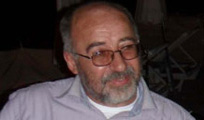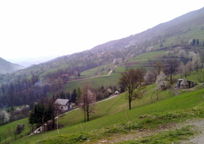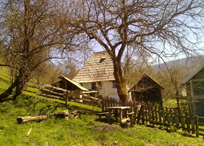Michael McDonough
Ton Venhoeven
Ahmet Hadrovic
Michael Braungart
Marcel Vroom
Wim Poelman
Rudi Daelmans
Martin Smit
Nirvana Pistoljevic
Natasa Perkovic
Sanja Durmisevic
Miriam Losse
Jan Brouwer
Martin Wollensak
Thomas Bednar
Maarten Dansen
Jaap Wiedenhoff
Adnan Pasic
Ivan Straus
Job Roos
Boran Pikula
Dzenana Bijedic
Haris Hadzialic
Ejub Dzaferovic
Almedina Hadzic
Alisa Grabus
Sanela Klaric
Azra Korjenic
Ken Yeang
Dushko Bogunovich

Lecture:
Green life style
18:15h
Day One, Tuesday 09 September
Collegium Artisticum
AHMET HADROVIĆ
Since 1982, he has been working on the Faculty of Architecture in Sarajevo, in all capacities, from assistant to full time professor (2000); where he has been the Dean since 2005.
To date, the Author has published:
Books
Gradska kuća orijentalnog tipa u Bosni i Hercegovini, Sarajevo, Avicena, (1993, First Edition, 1995, Second Edition),
Arhitektonska fizika, Sarajevo, AB Technics, 1996,
Građevinski materijali (textbook), Sarajevo, Ministry of Education, Culture and Sport of FBiH, 1998,
Defining Architectural Space on the Model of the Oriental Style City House in Bosnia and Herzegovina, Serbia, Montenegro, Kosovo and Macedonia, Booksurge, LLC, North Charleston, SC, USA, 2007,
Bioclimatic Architecture, Searching for a Path to Heaven, Booksurge, LLC, North Charleston, SC, USA, 2008,
Hadre, The Evolution of Bioclimatic Architecture, Booksurge, LLC, North Charleston, SC, USA, 2009,
Structural Systems in Architecture, Booksurge, LLC, North Charleston, SC, USA, 2009,
Studije o arhitekturi i ogled o arhitekti (and the English Version: Research Study on Architecture and Overview of the Architect’s Experience), Sarajevo, Acta Architectonica et Urbanistica, Arhitektonski fakultet u Sarajevu, 2010.
Arhitektonska fizika, second edition (English: Architectural Physics) Sarajevo, Acta Architectonica et Urbanistica, Faculty of Architecture in Sarajevo, 2010,
Arhitektura u kontekstu (English: Architecture in Context), Sarajevo, Acta Architectonica et Urbanistica, Faculty of Architecture in Sarajevo, 2011,
Monographs:
Očevijski majdani, juče, danas, sutra, Sarajevo, Our Antiquities( Annual publication of the Institute for Protection of Cultural, Historical and Natural Heritage of Bosnia and Herzegovina, XVIII-XIX, 1989,
Iz naših mahala i avlija, Sarajevo, Avicena, 1993,
Bosnom kroz gradove, Sarajevo (published as a feuilleton in the newspaper Istina BiH), 1992-1995.
Scientific Papers, Architectural Projects and Structures:
Thirty two scientific papers, a number of studies and over 200 projects (houses, villas, hotels, cultural centers, dwellings, kindergartens, business and economic facilities, pharmacies, infirmaries, sacral and memorial facilities, town planning projects).
Of the structures built we will name the following: the Adilbeg Mosque, Sarajevo (1999), the Kuwait Mosque, Sarajevo (2006), Mosque in Konjodor near Cazin (2002), the Islamic Center, Novi Travnik (2000-2010), the City Mosque, Breza (2002-2010), dwelling facilities of Čekaluša 1 (2002) and Skenderija 1, Sarajevo (2005), Raiffeisen Bank, Sarajevo (1999), Apartment Buildings of the Reumal Hotel, Fojnica (2007), the Elementary School of Zajko Delić, Vogošća (2007), Hollywood Hotel, Ilidža (2002), Butmir Hotel, Sarajevo (2002-), Cemeteries of Igman 1 and Igman II, Igman (1998), ASPEK Terminal, Vogošća (2008), Ahmetspahić Business Facility, Sarajevo (2008), ASPEK Food Complex, Ilidža (2000-2008), the Ahmetspahić Villa, Sarajevo (2008), the Baljić Villa (now the residence of the Qatar Ambassador in BiH), Sarajevo (2002-2008), the Druškoć Villa, Sarajevo (2008), Kindergarten, Novi Travnik (2009-2010), the Kurtović Sports Center, Sarajevo (2009), Residence of Japanese Ambassador in BiH, Sarajevo (2009).
On various architectural competitions, five times a winner of the first-prize (structures built) and twice a winner of the third-prize.
Lecturing on Karadeniz Technic University, Trabzon, Turkey (2007), TU Delft, Delft, Netherlands (2008), King Suad University, Riyadh, the Kingdom of Saudi Arabia (2008); since 2009, a visiting professor at the Sarajevo International University, Sarajevo.
In order to clarify the referenced paradox, the Author visited area on several occasions over the period of several years, observing it indirectly, keeping records of its life and conversations with locals (including the locals who live in that territory and those who come occasionally, but permanent residence is in Fojnica), studying the history and current circumstances in Fojnica.
This mongraph appeared as a result of the aforementioned endeavor, being the explanation of the paradox regarding the absence of stecak tombstones in an area abundant in evidence of sustainability, and as a text which arises many questions about humans and life in general...


